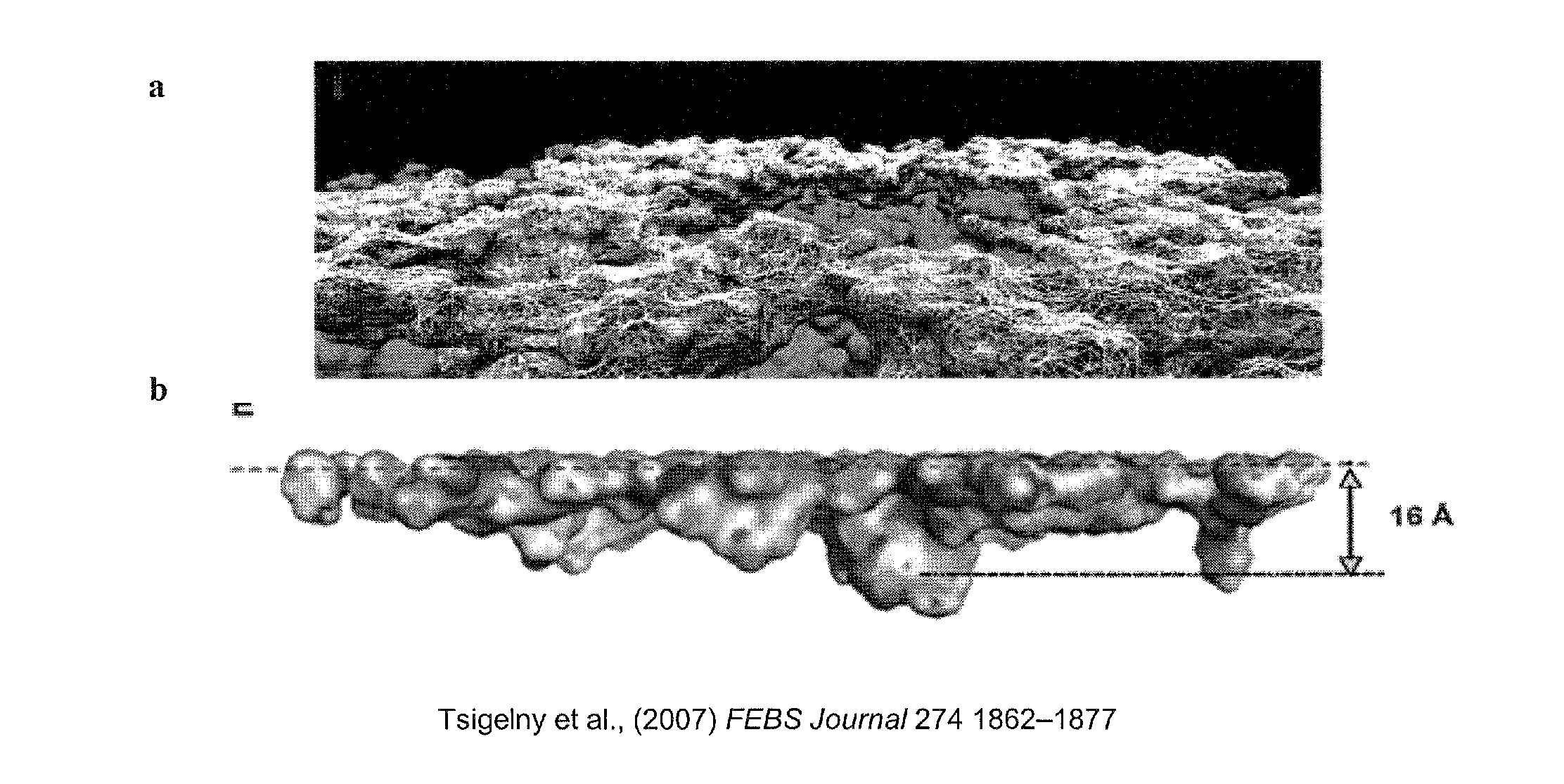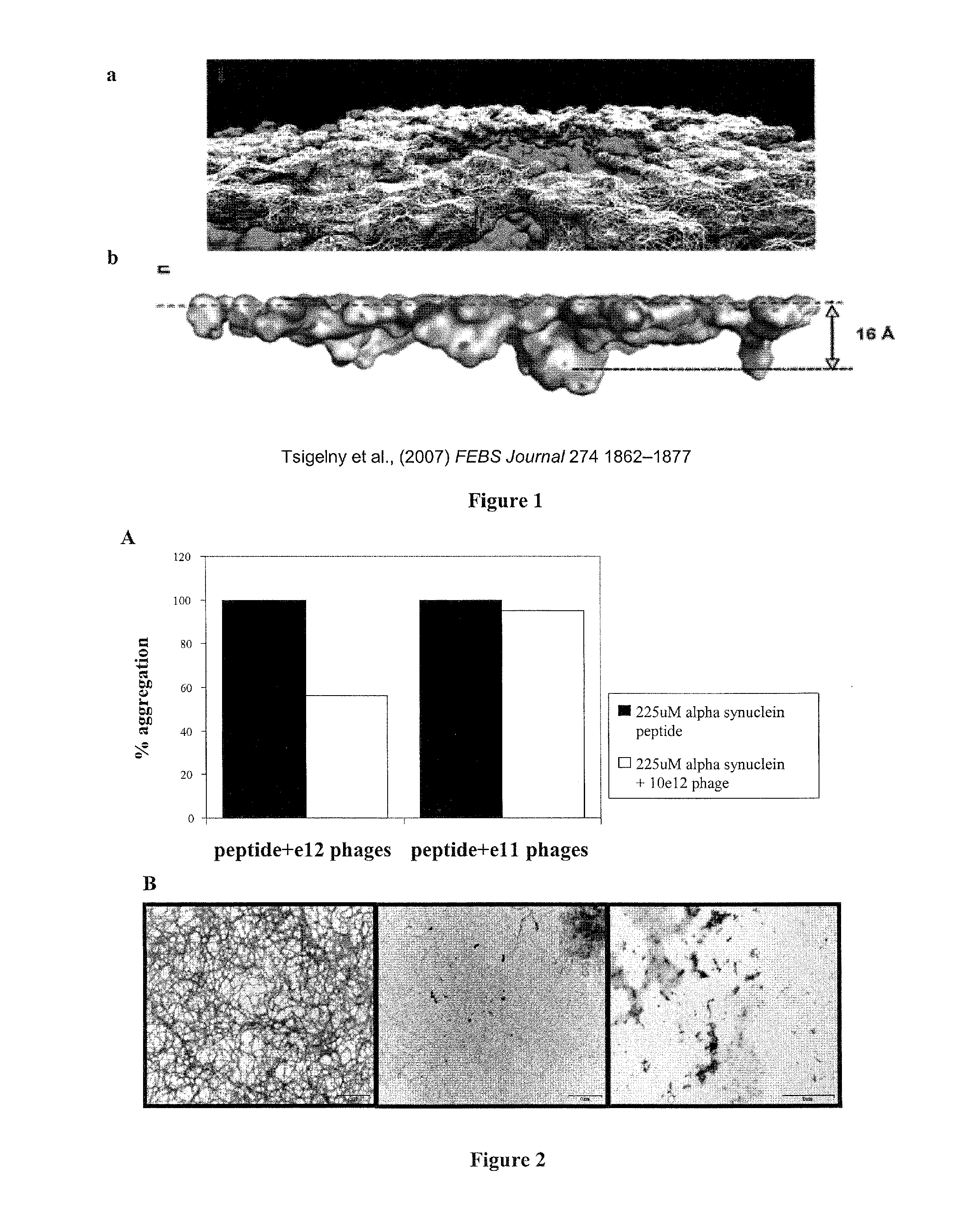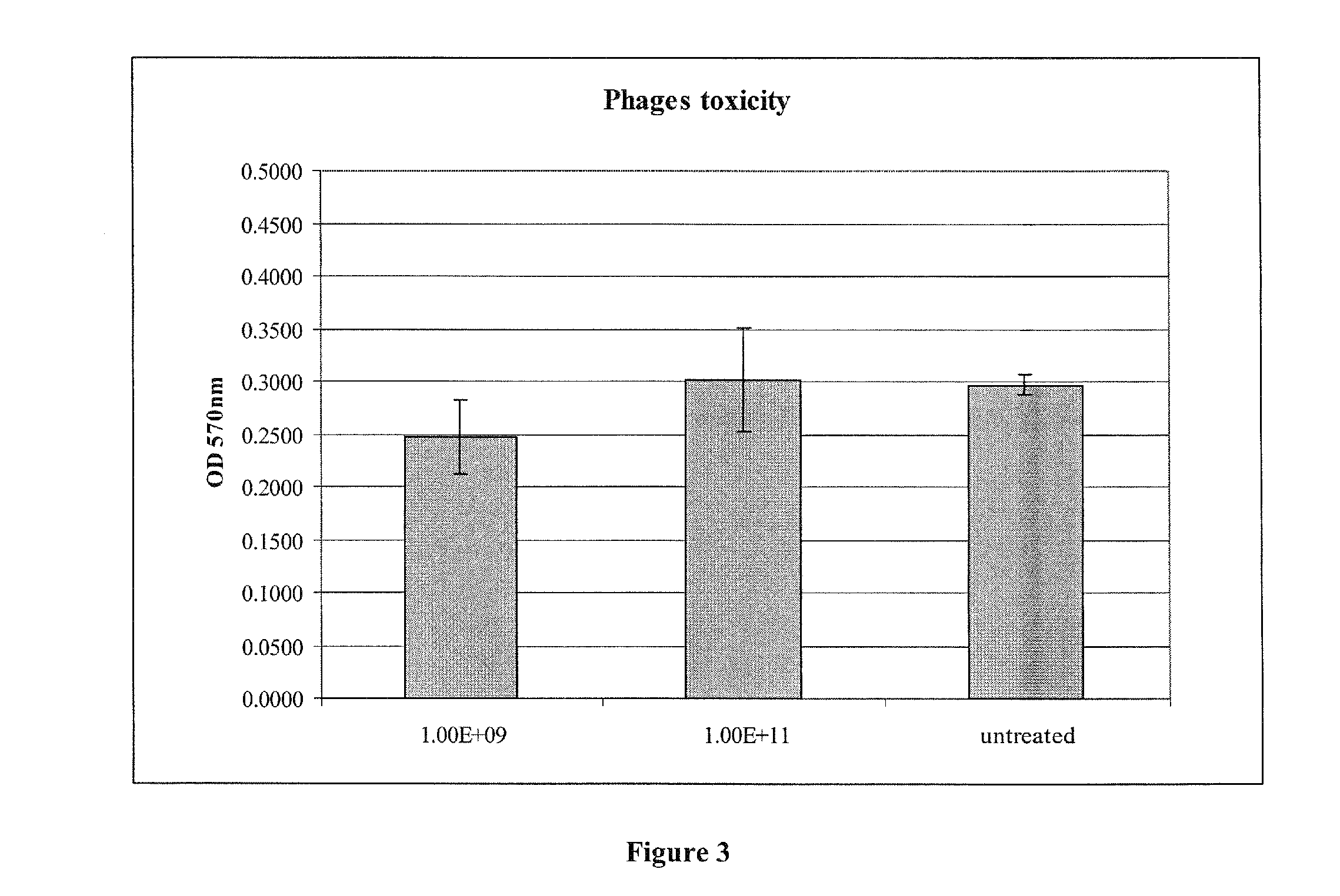Method for treating parkinson's disease
a parkinson's disease and treatment method technology, applied in the field of parkinson's disease treatment methods, can solve the problems of not many well-structured models of the mechanism of toxicity, the insertion of aggregates into the cell membrane would have a catastrophic effect on cell viability, and the pores and pore activity have yet to be demonstrated in biological systems
- Summary
- Abstract
- Description
- Claims
- Application Information
AI Technical Summary
Problems solved by technology
Method used
Image
Examples
example
[0070]The experimental results in this example demonstrate the effect of filamentous phage on disaggregation of α-synuclein aggregates involved in the pathogenesis of PD.
Preparation of Filamentous Phages
[0071]M13 filamentous phages were prepared from infected TG1 Escherichia coli cultures with M13K07 helper phage (New England Biolabs, Beverly, Mass.) in 2YT broth containing 50 μg / ml kanamycin (Sigma-Aldrich, St. Louis, Mo.). Bacterial cells were centrifuged (8300×g, 15 min), and phages were precipitated from the supernatant by addition of 1 / 5 (wt / vol) of 16.7% polyethylene glycol (PEG) and centrifuged (14,000×g, 1 h at 4° C.). The pellet was resuspended in sterile phosphate-buffered saline (PBS) (3% of the supernatant volume). Residual bacteria were removed by centrifugation at 6,000×g for 15 min, and the phages then subjected to PEG-NaCl precipitation. The pellet was finally resuspended in PBS (2% of the supernatant volume) and phage solution filtered through a pyrogen-free 0.45 μm...
PUM
| Property | Measurement | Unit |
|---|---|---|
| Composition | aaaaa | aaaaa |
Abstract
Description
Claims
Application Information
 Login to view more
Login to view more - R&D Engineer
- R&D Manager
- IP Professional
- Industry Leading Data Capabilities
- Powerful AI technology
- Patent DNA Extraction
Browse by: Latest US Patents, China's latest patents, Technical Efficacy Thesaurus, Application Domain, Technology Topic.
© 2024 PatSnap. All rights reserved.Legal|Privacy policy|Modern Slavery Act Transparency Statement|Sitemap



